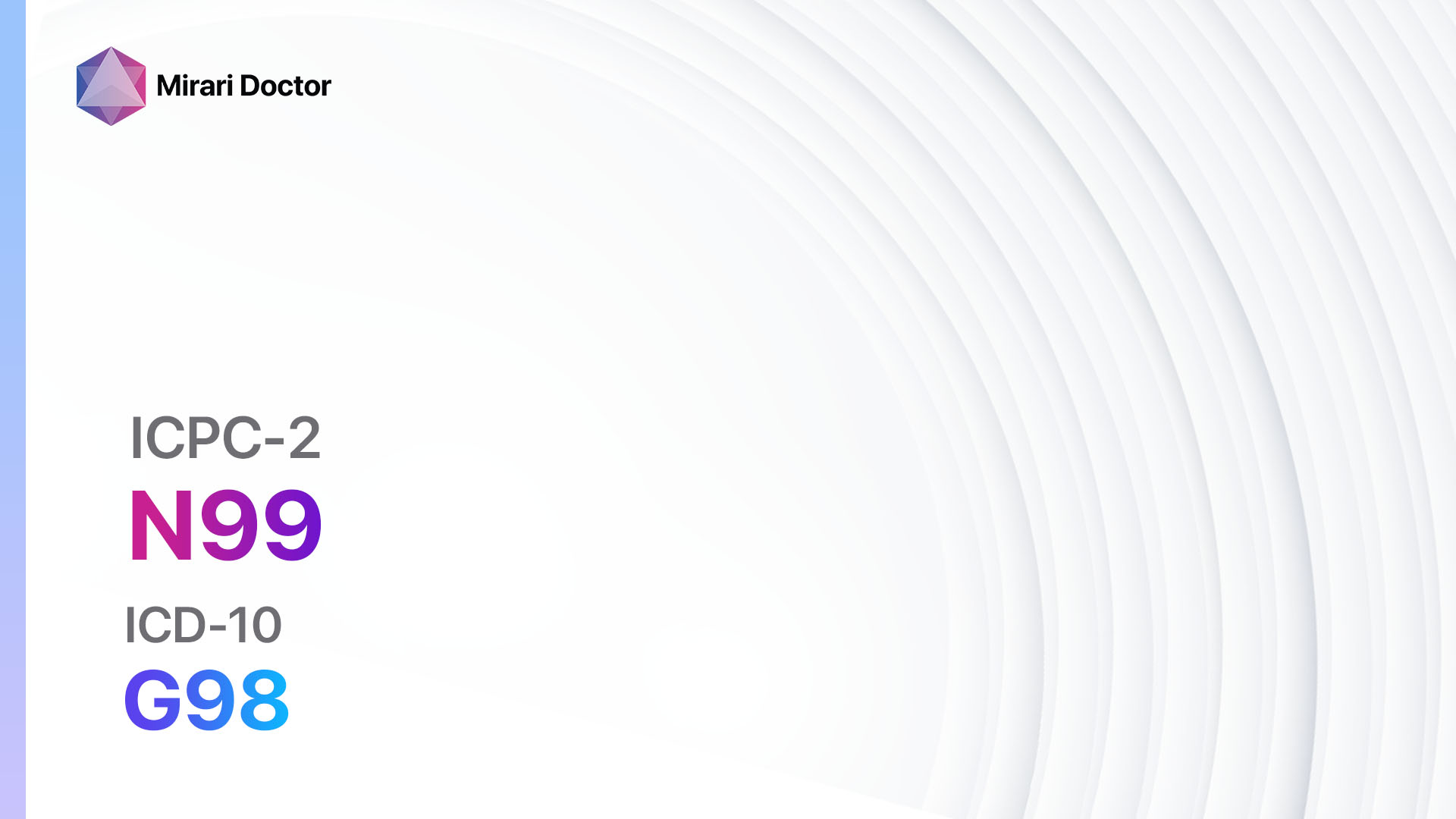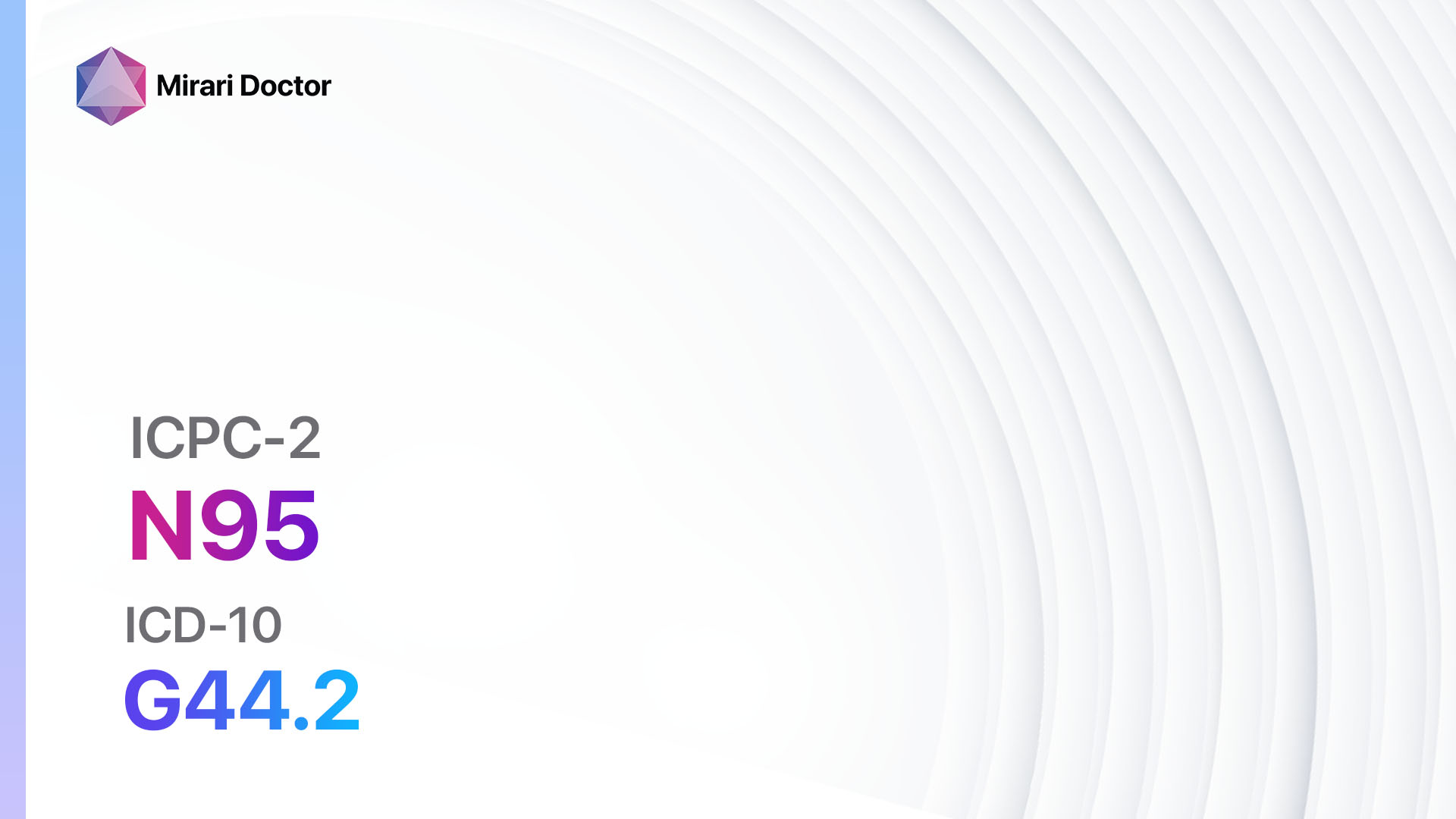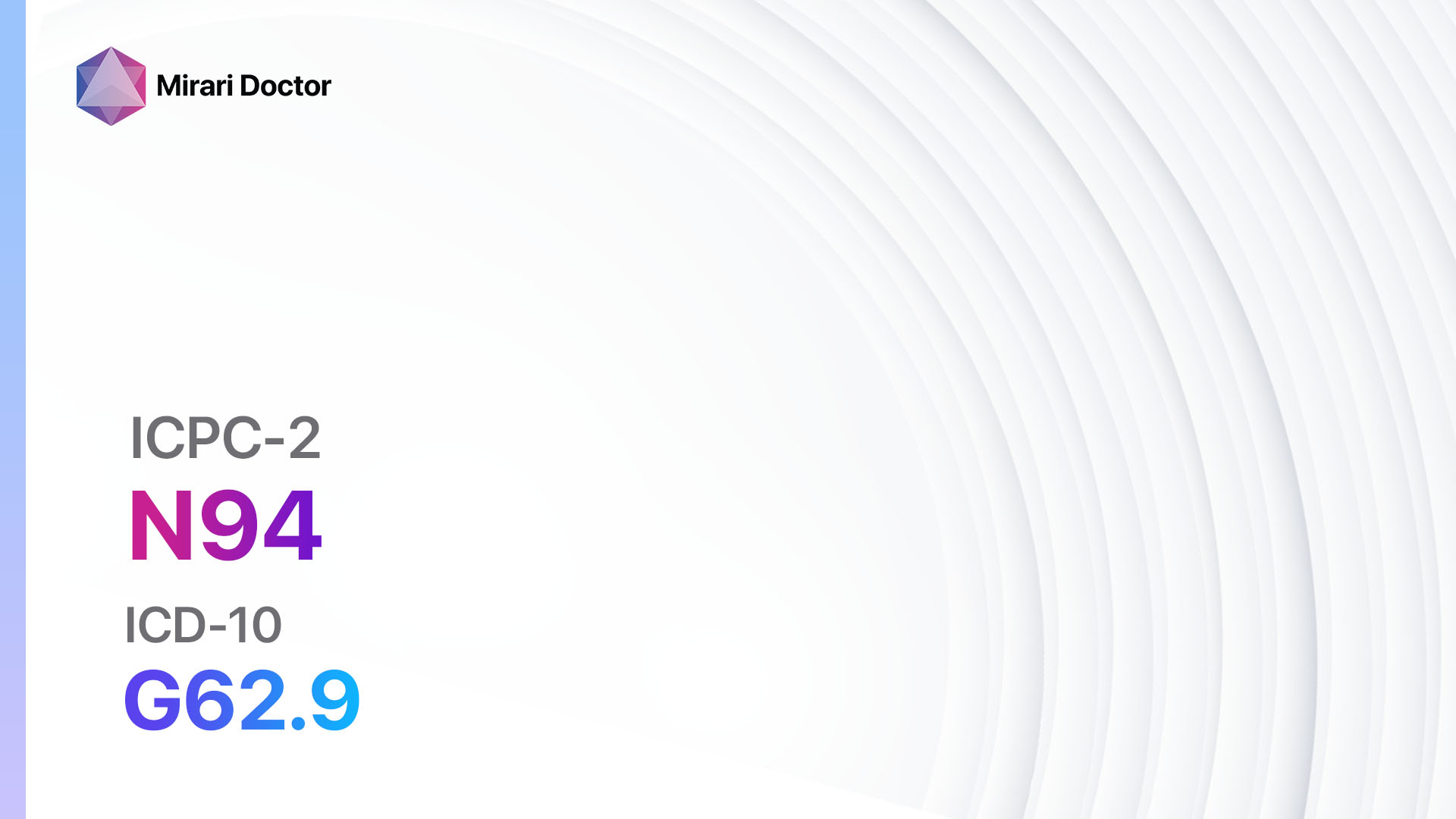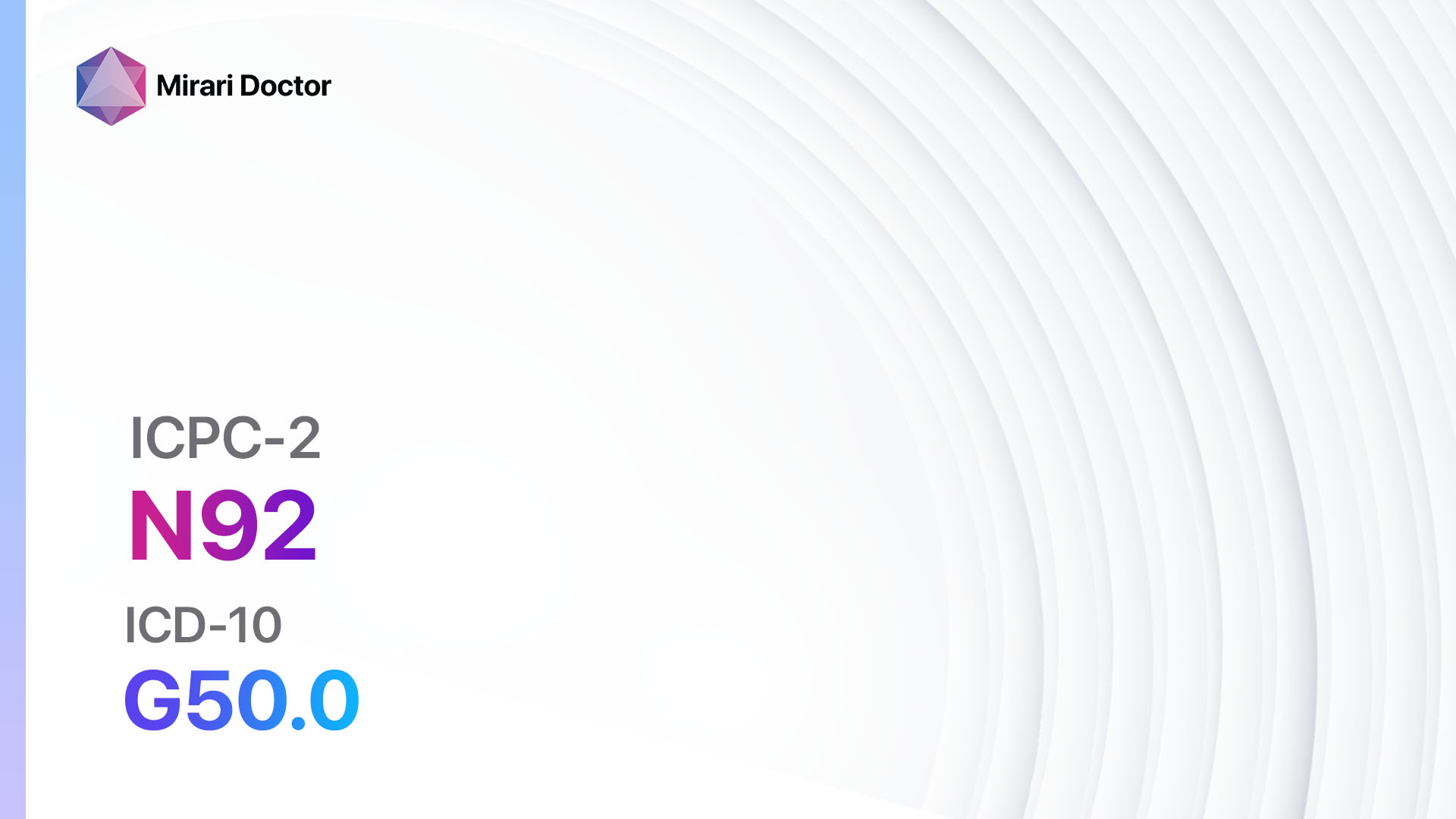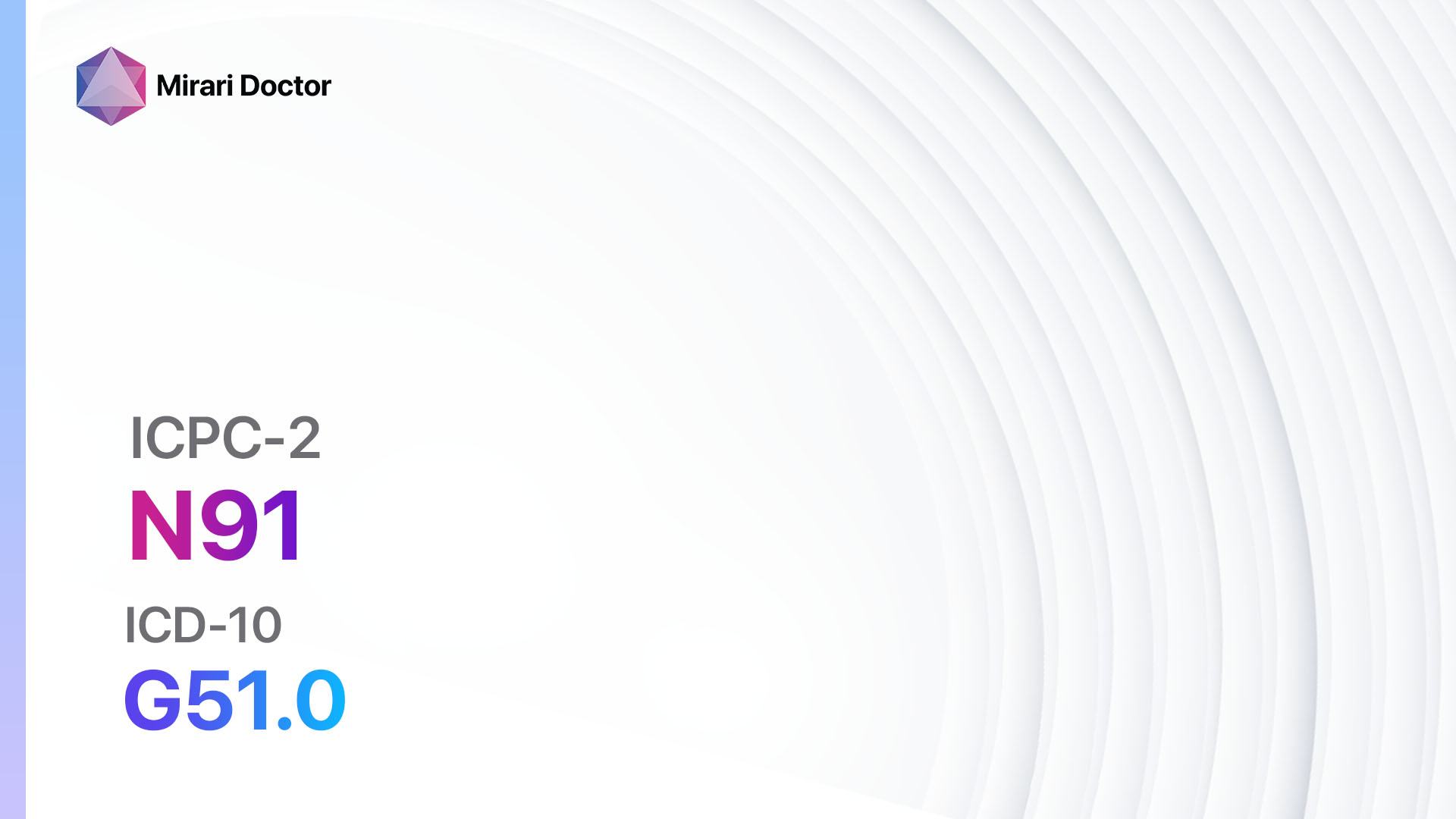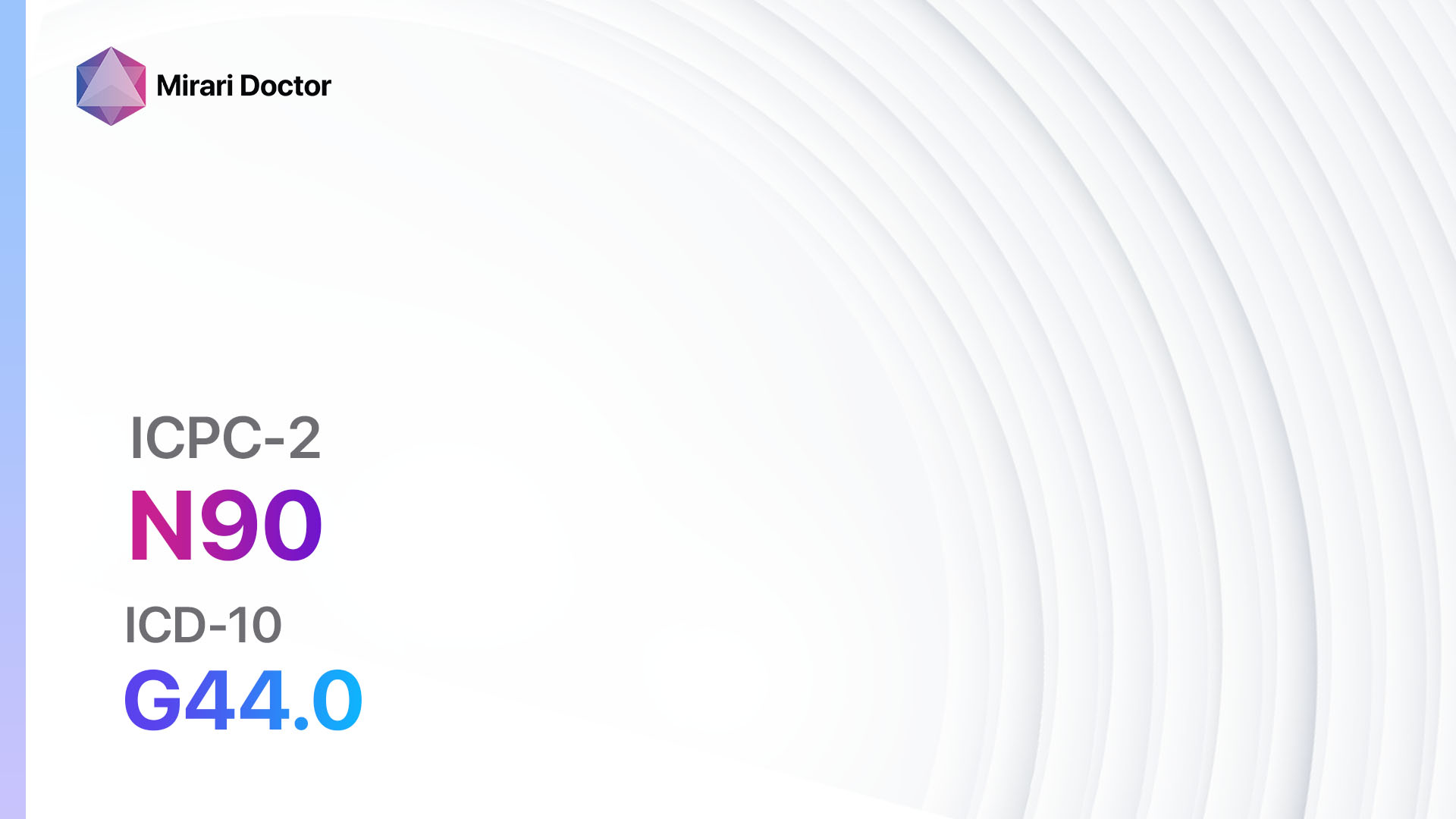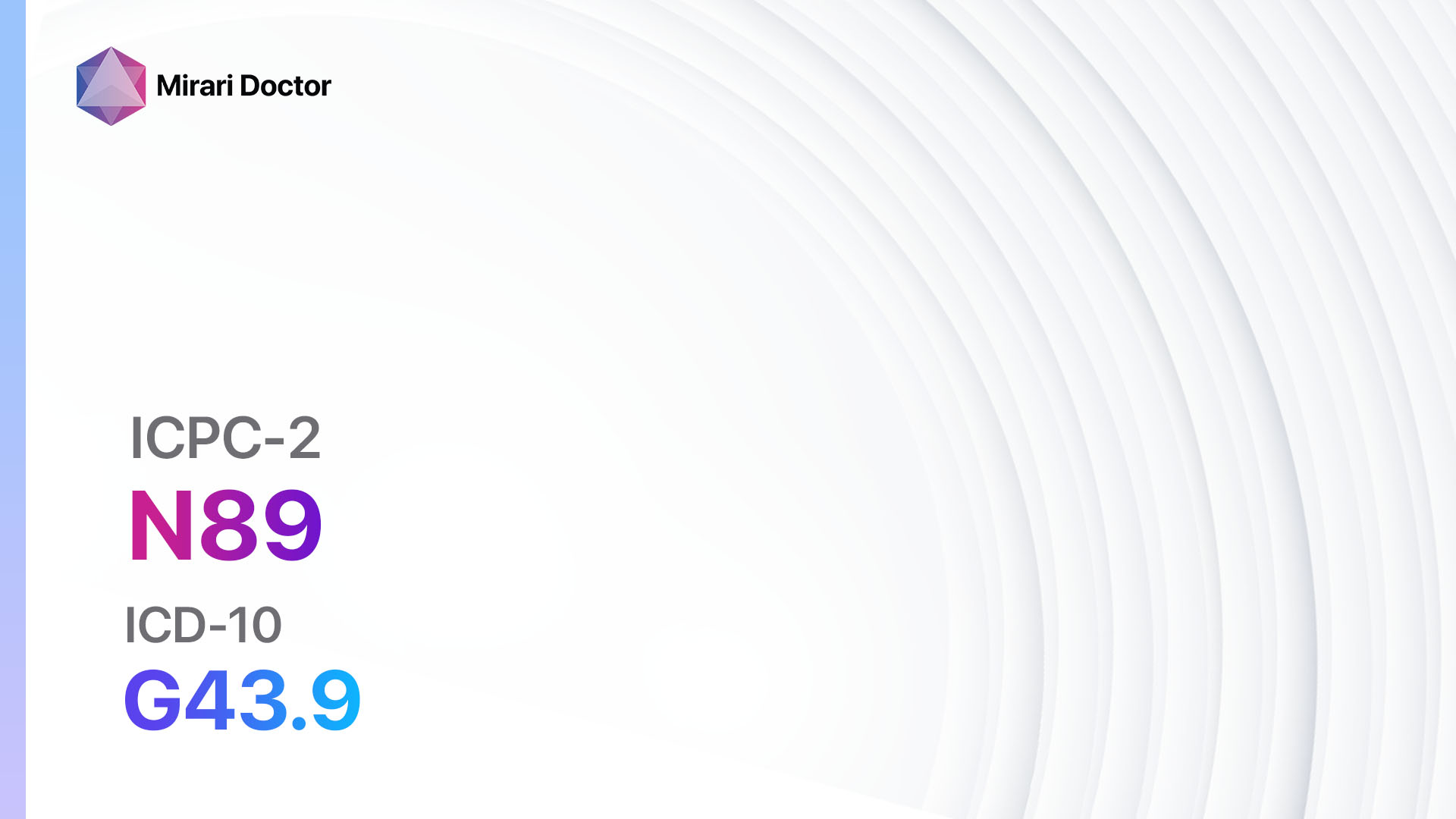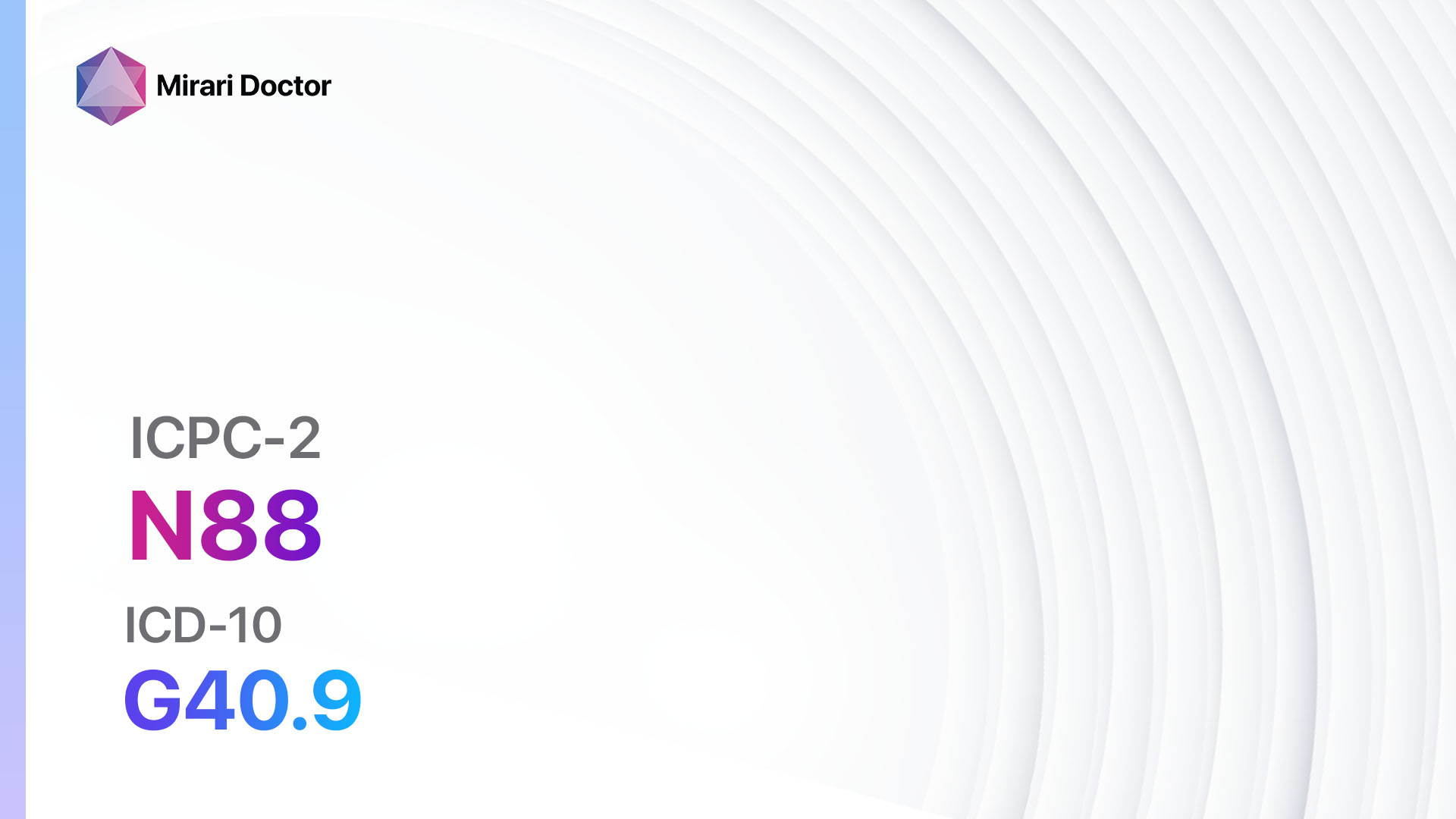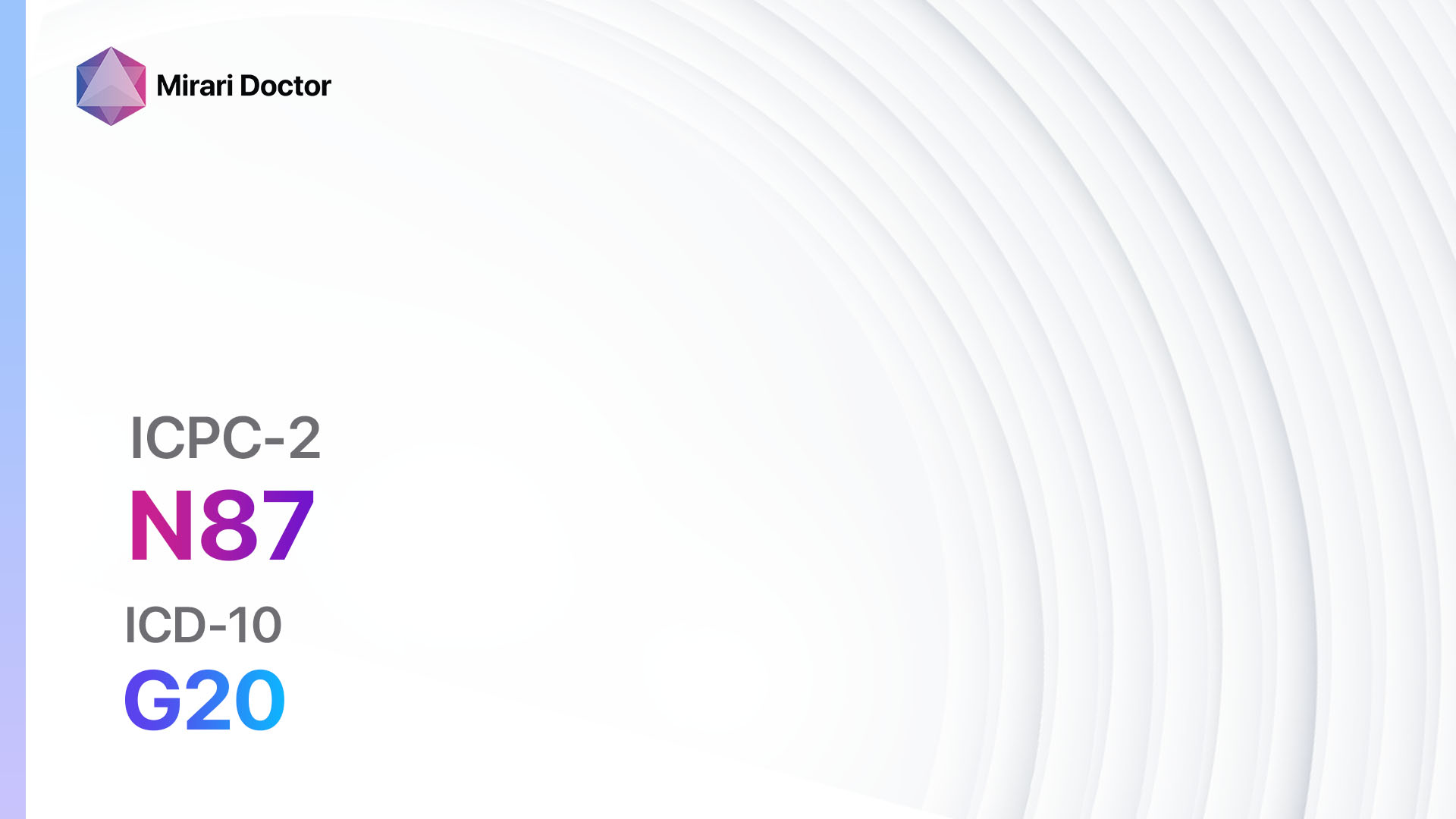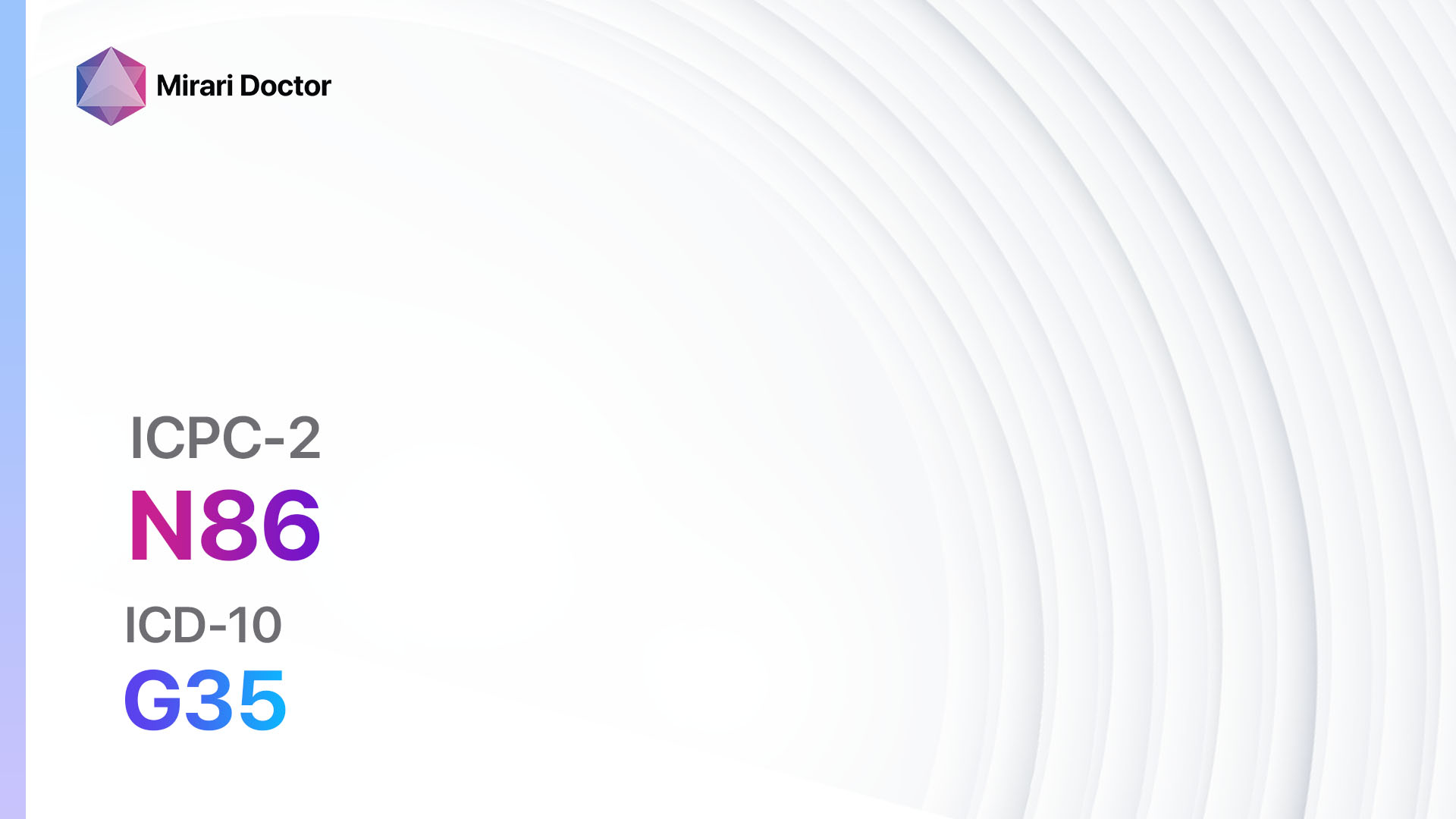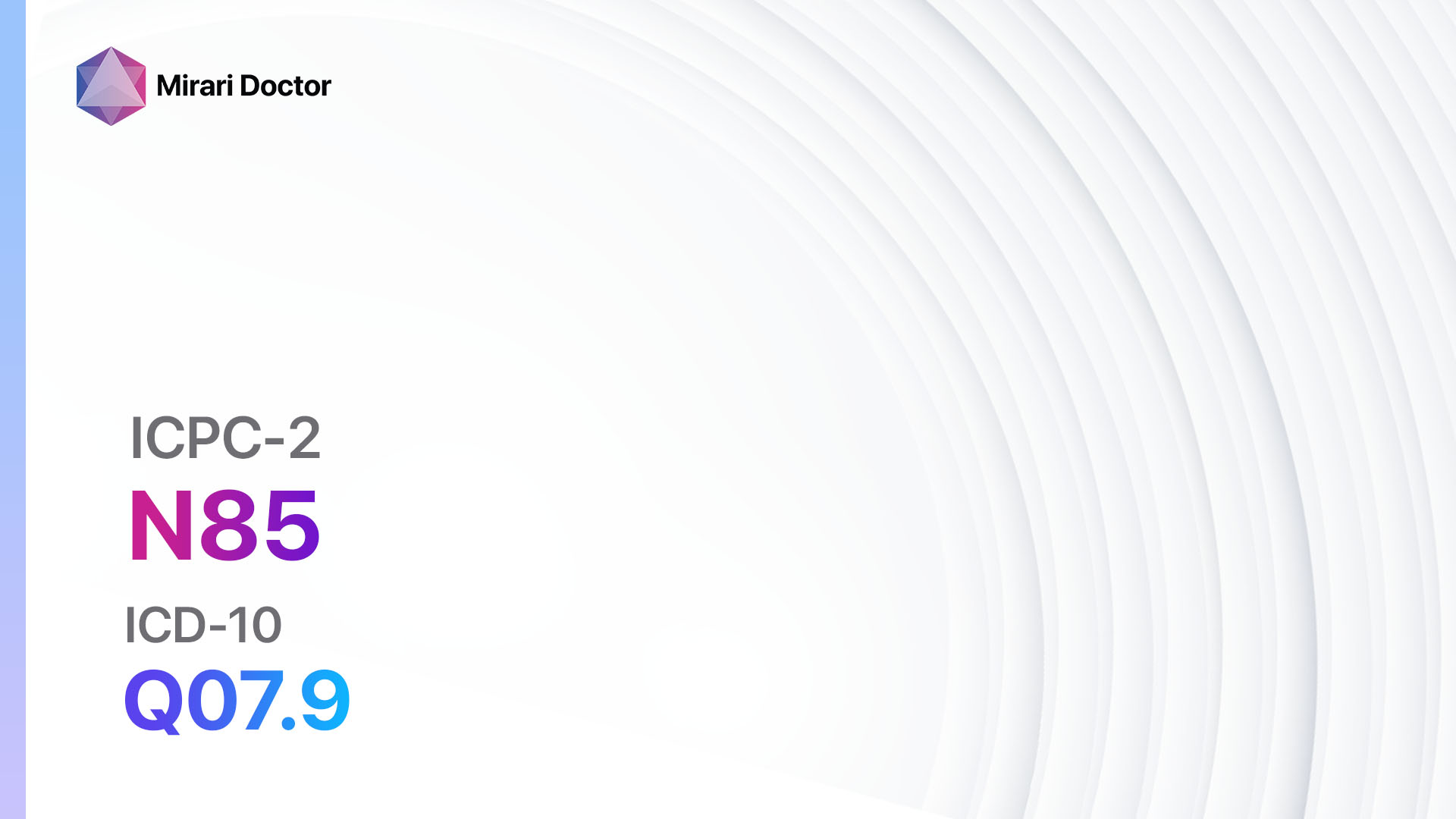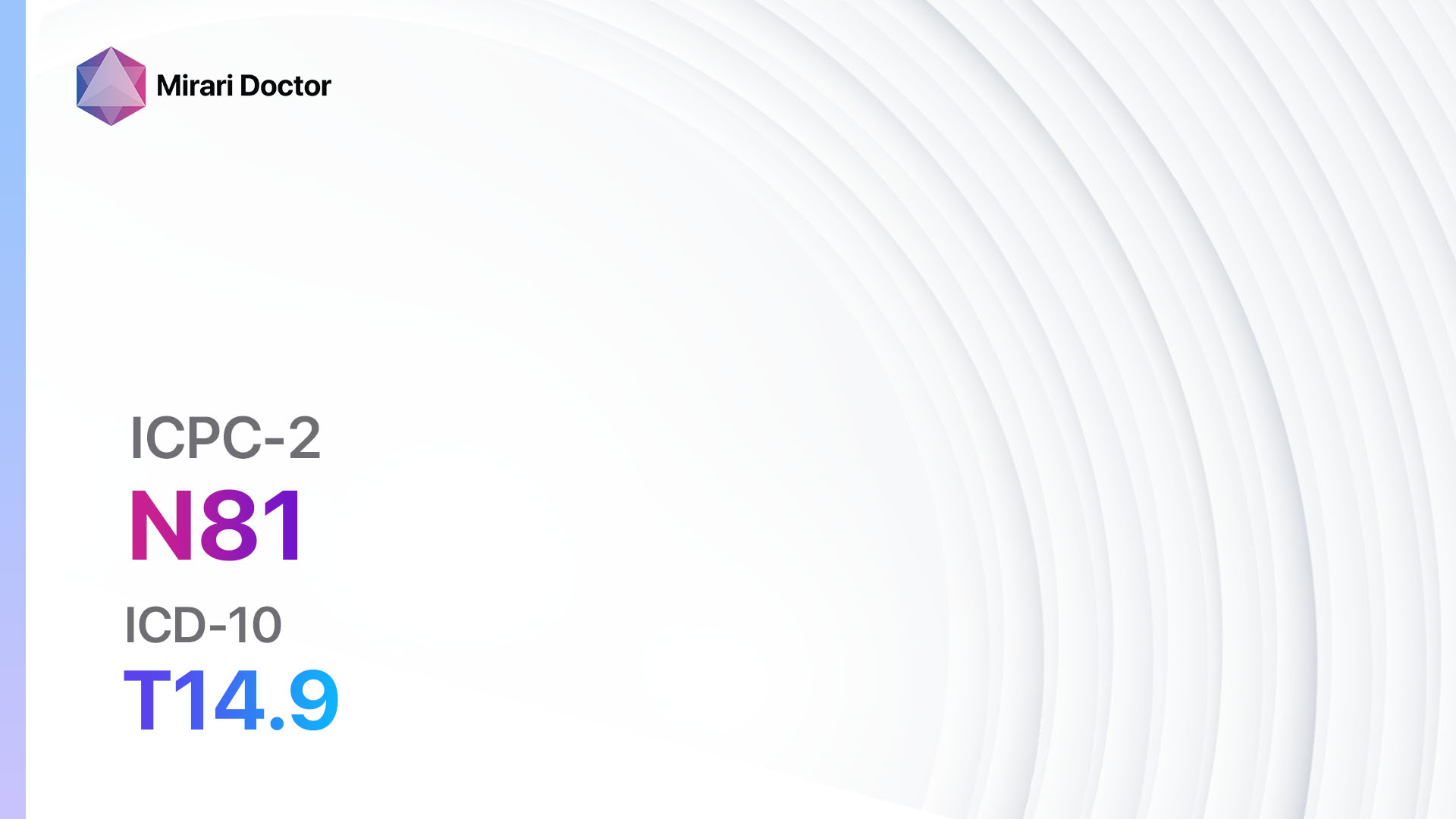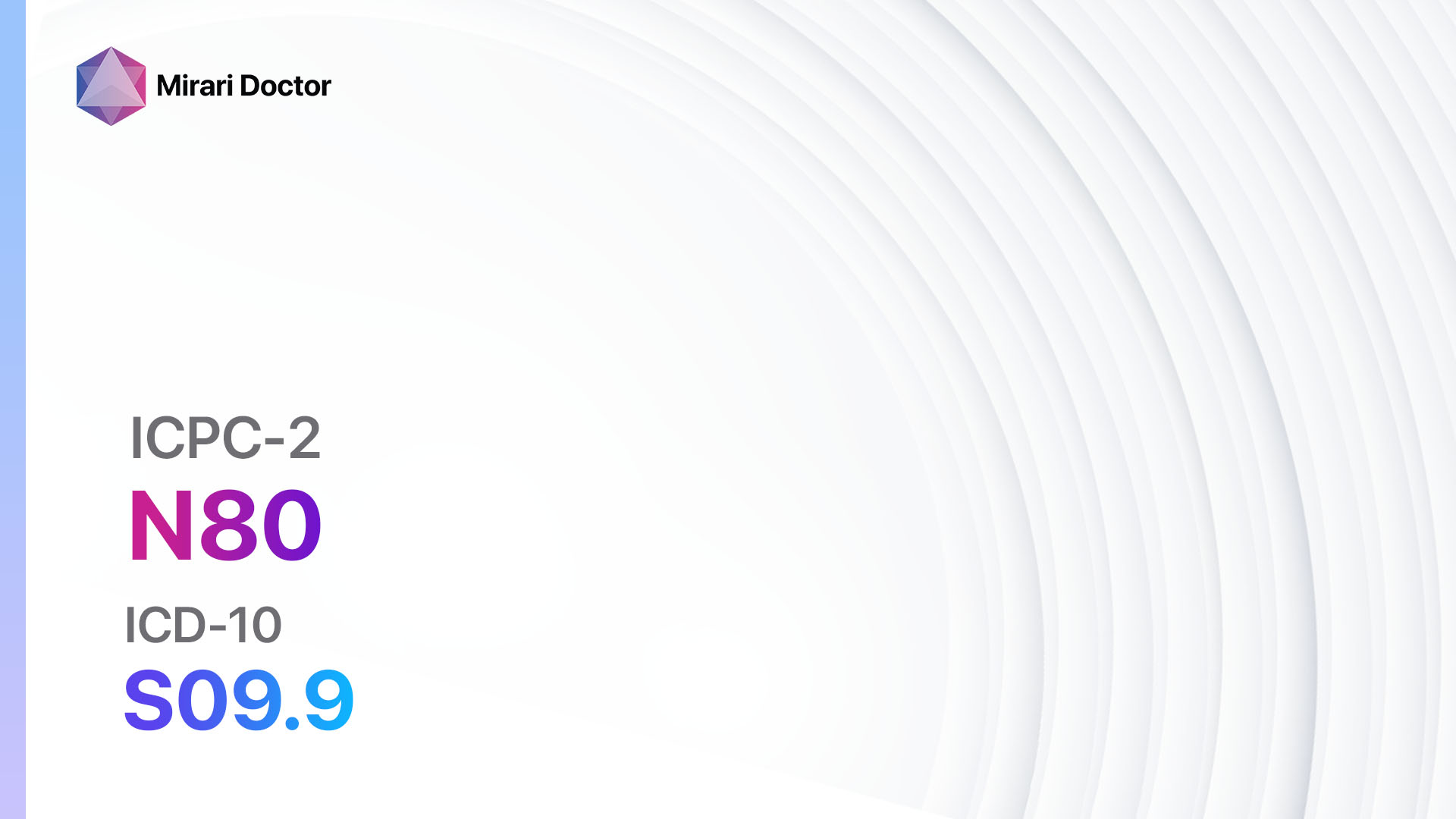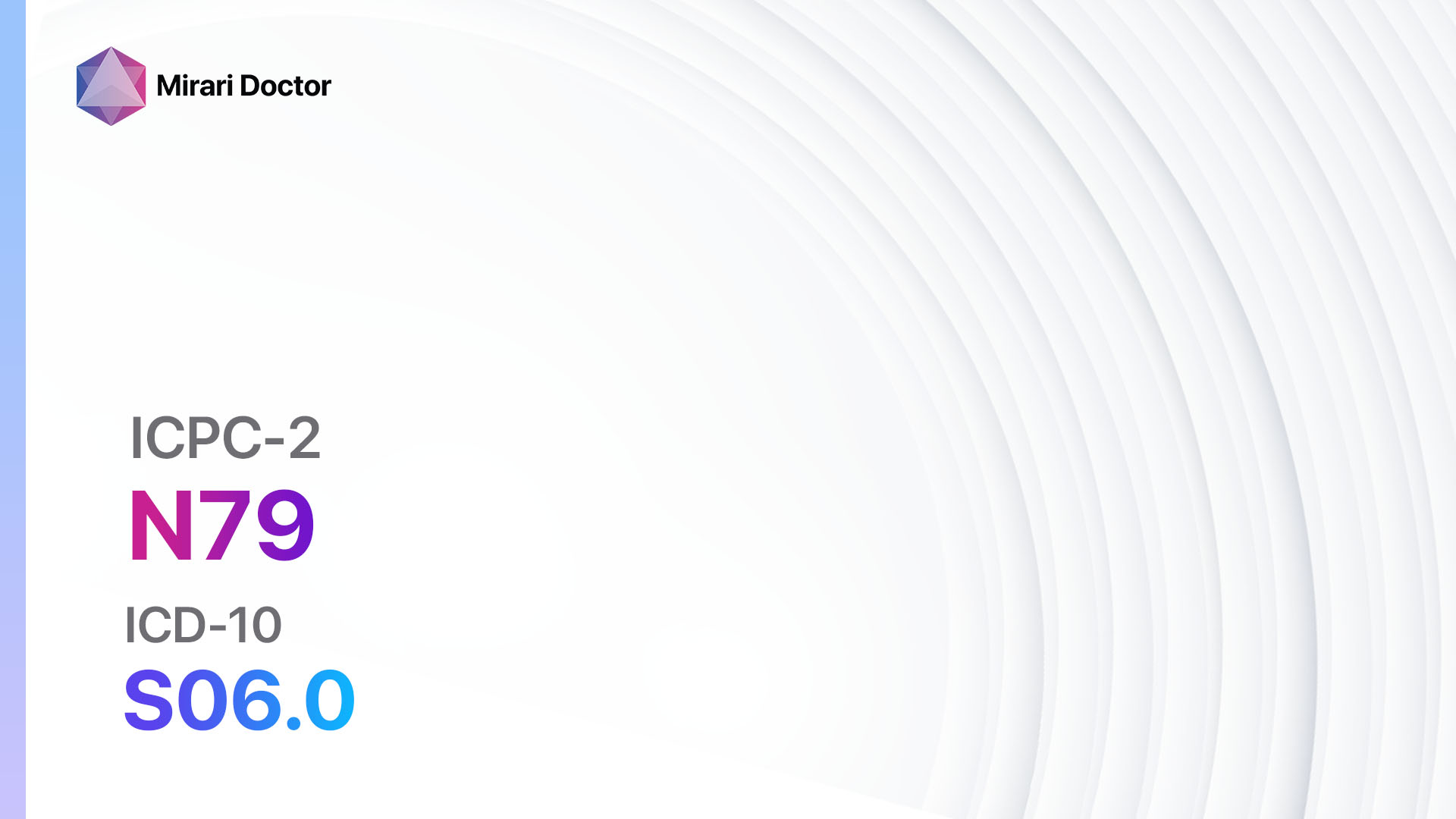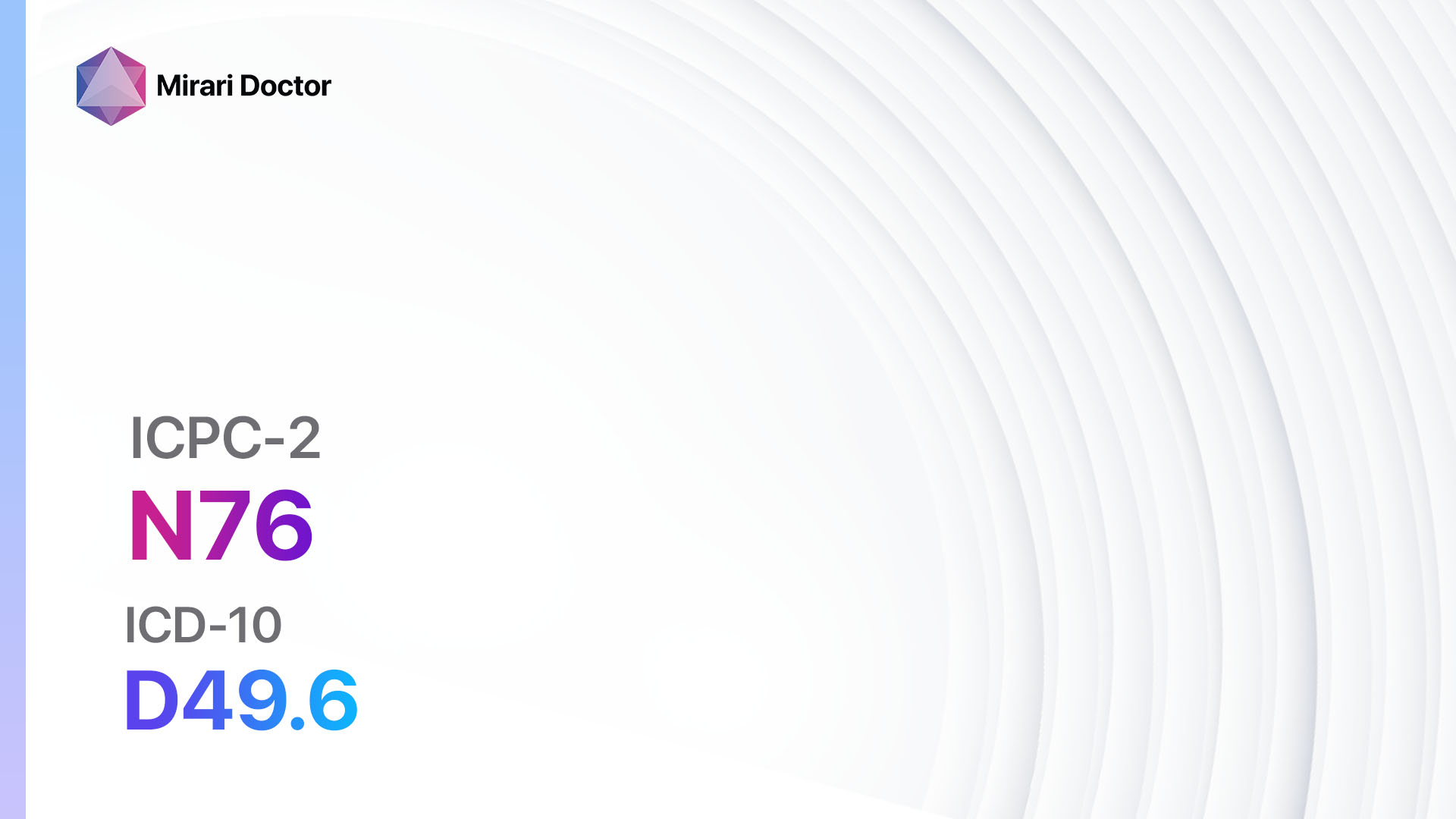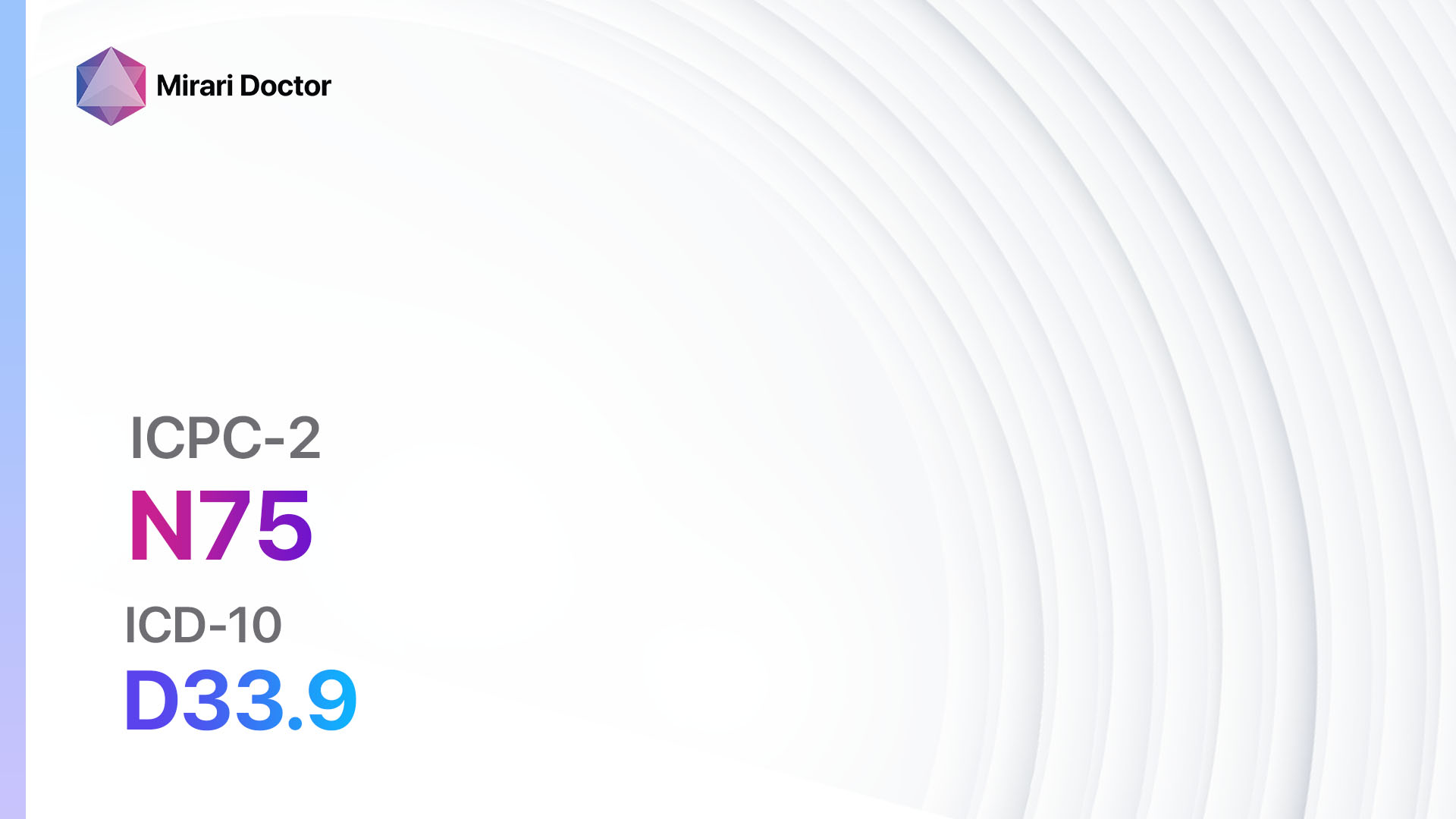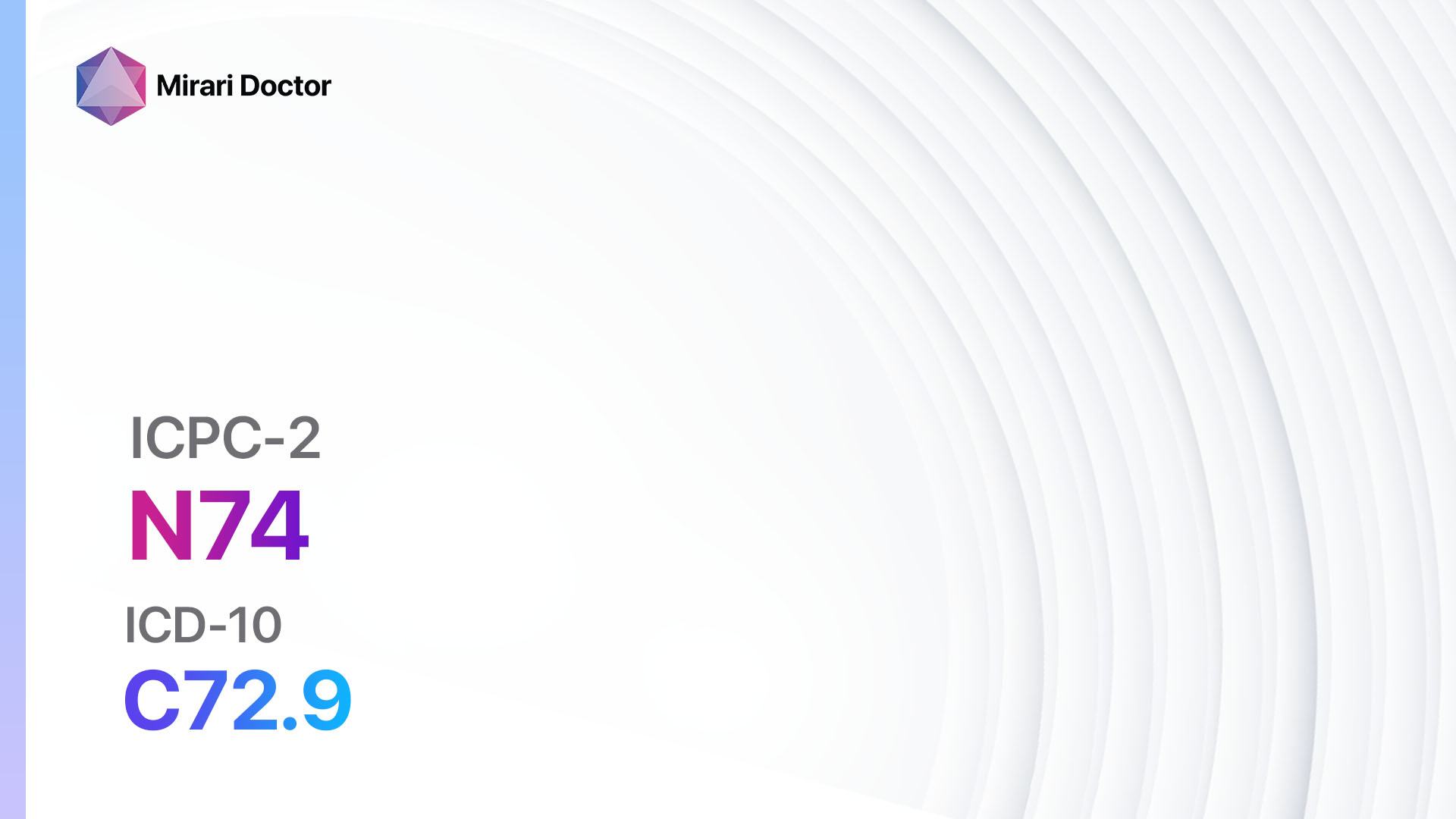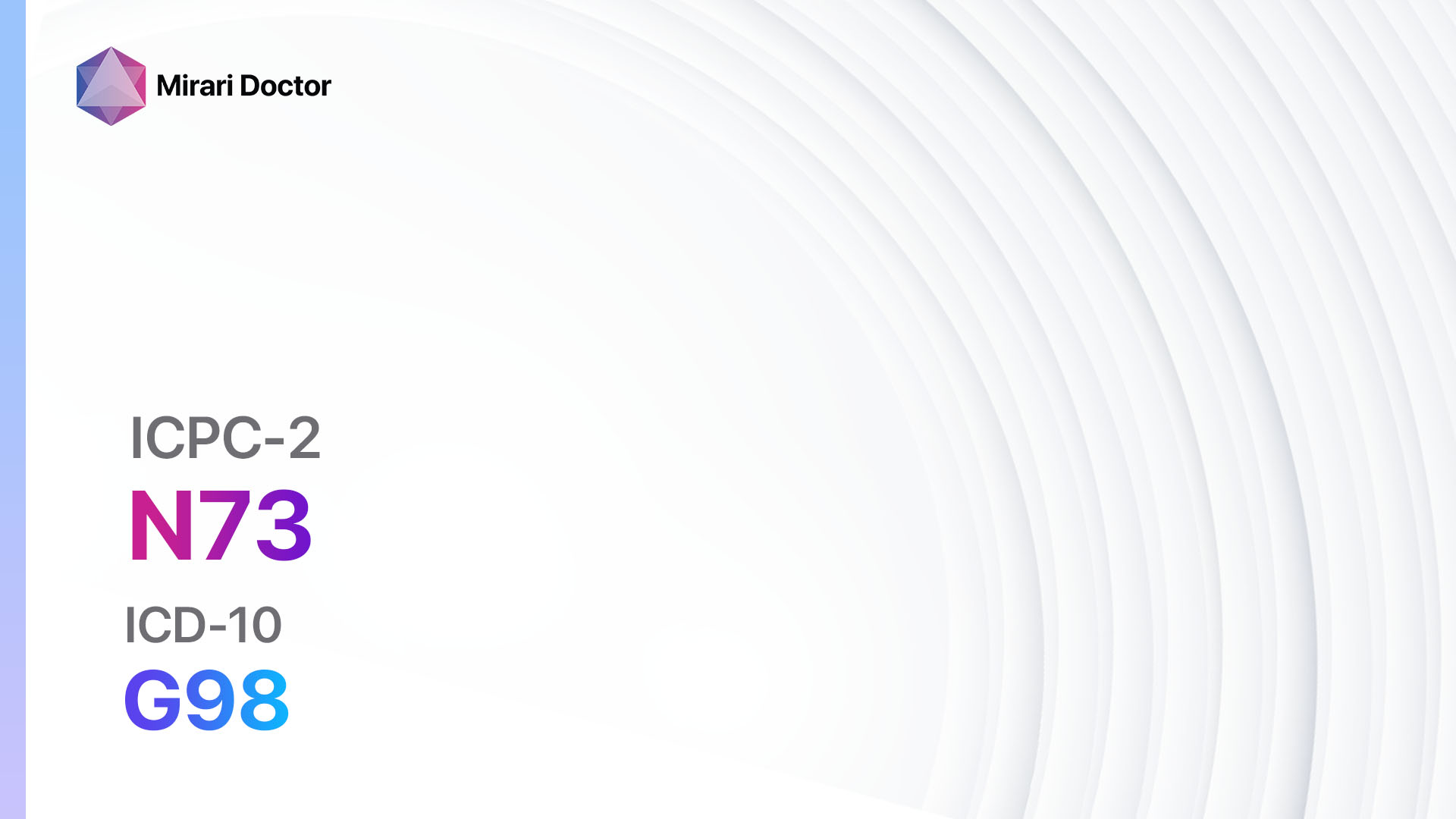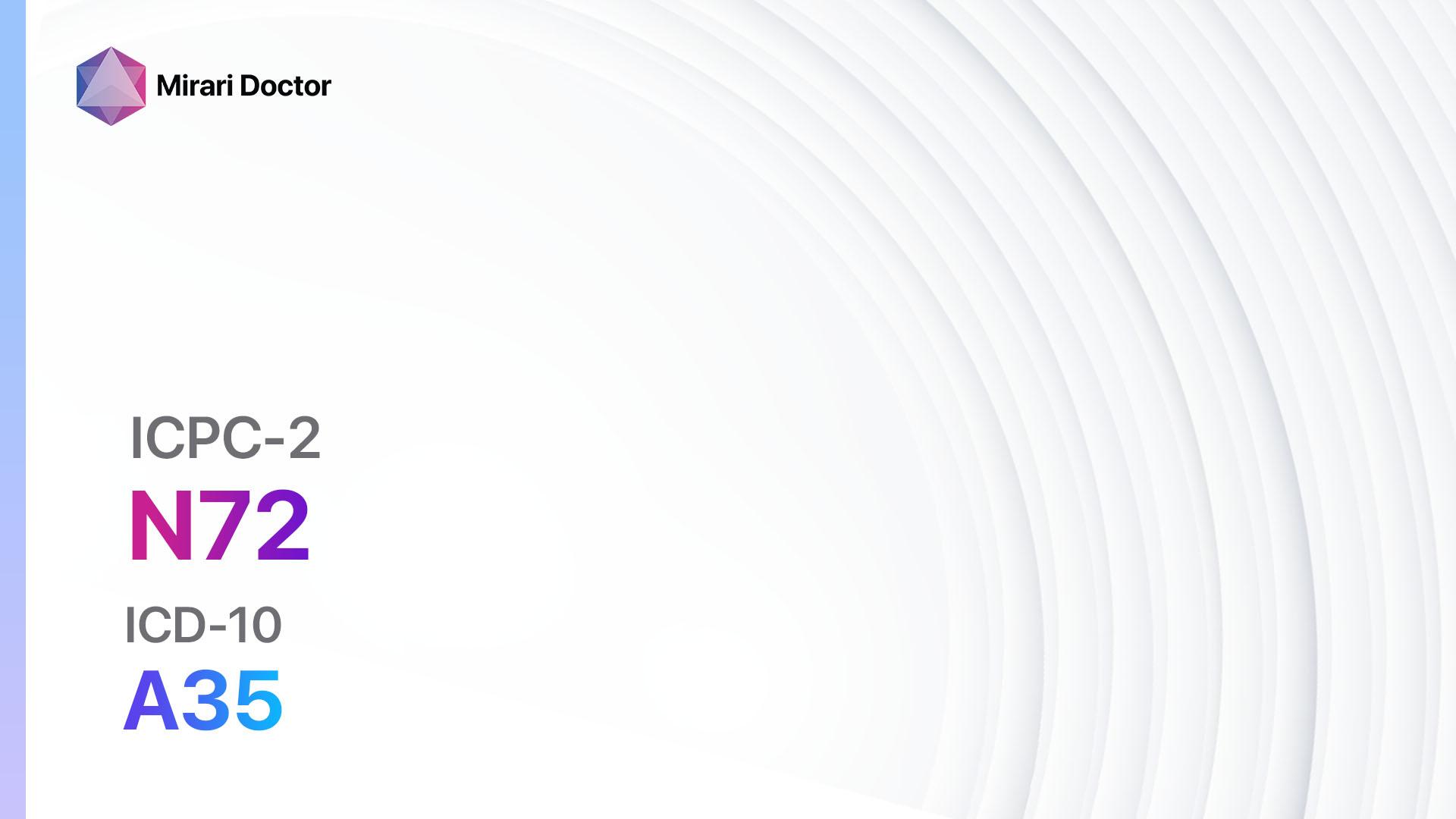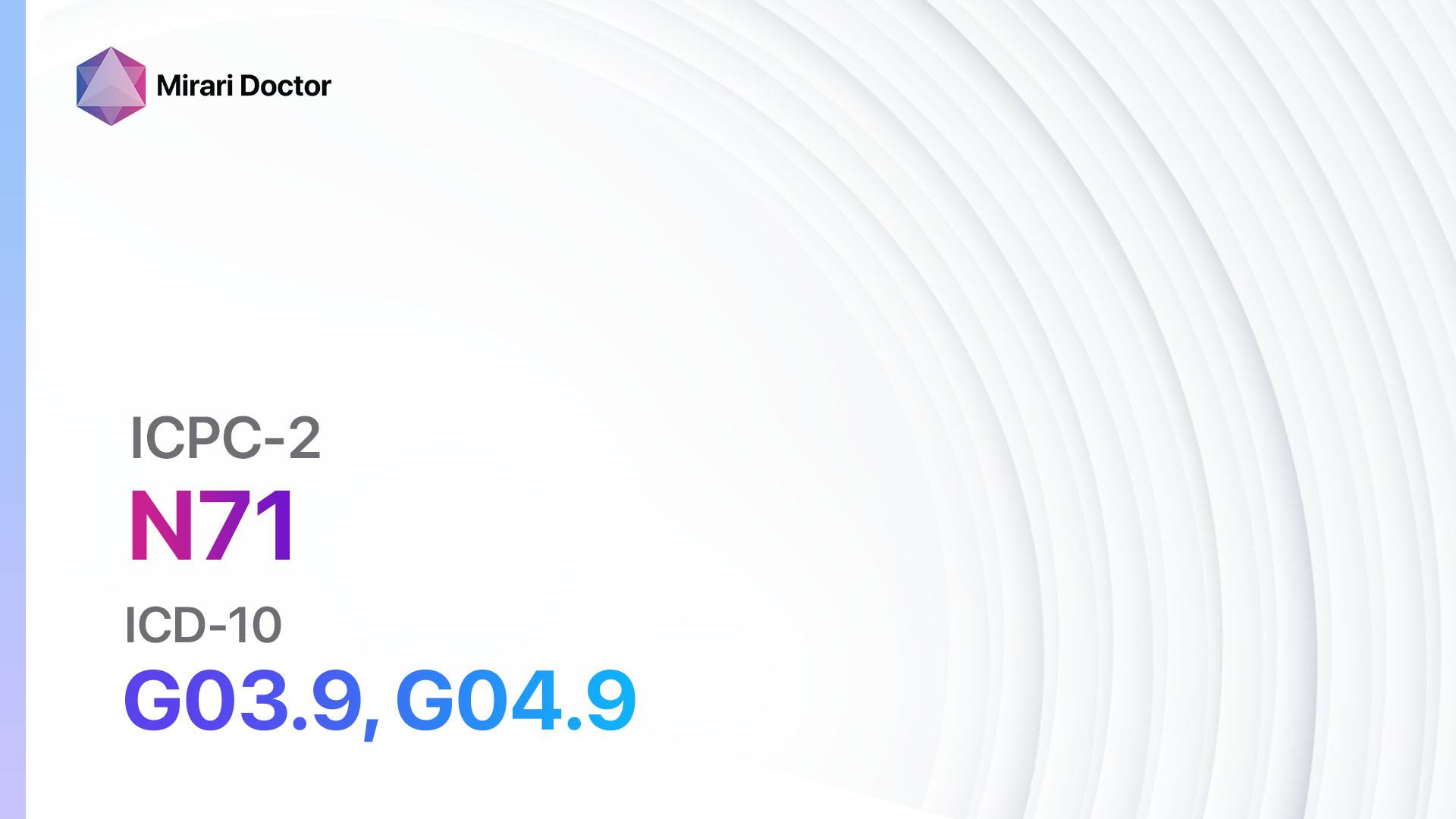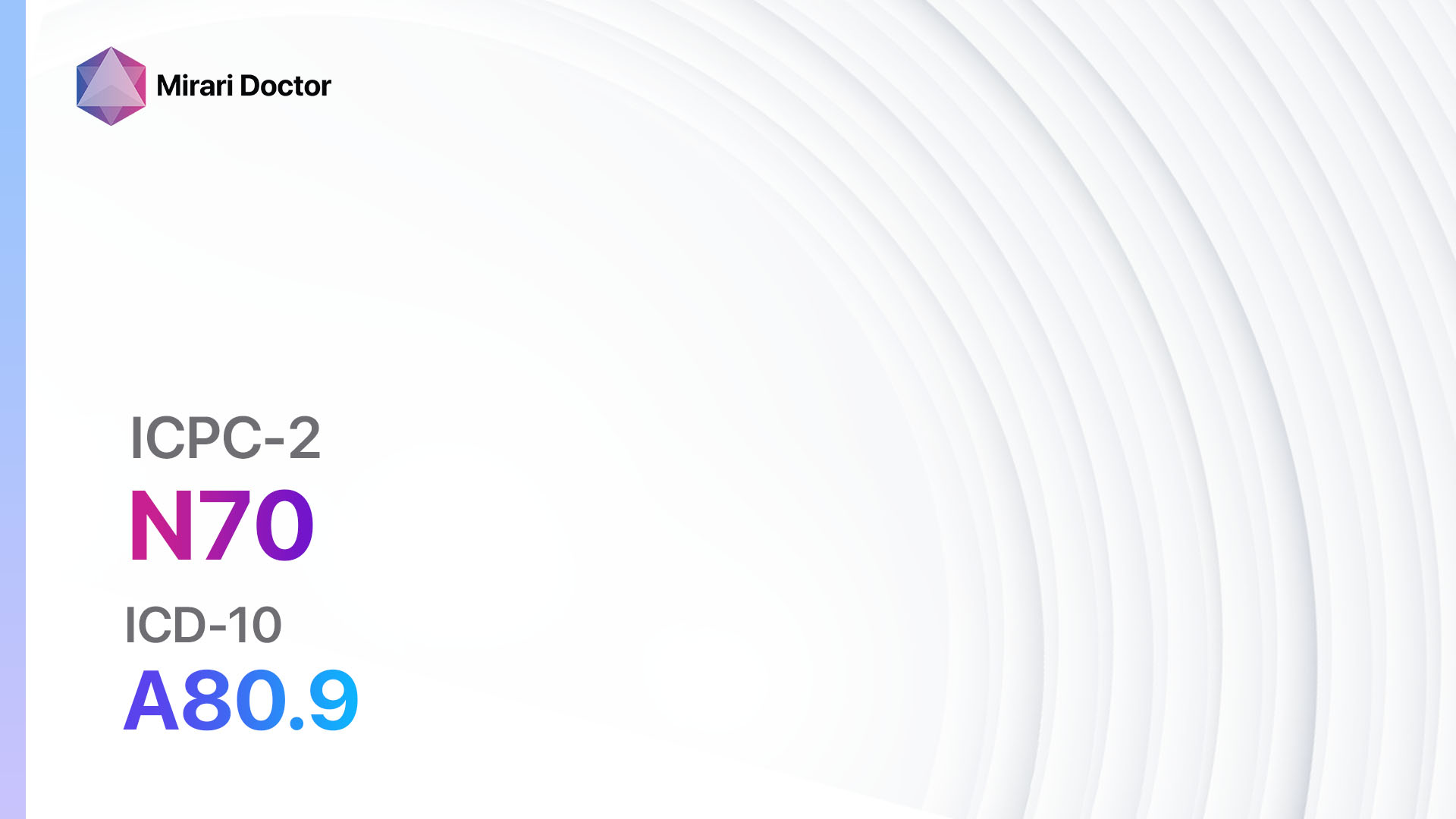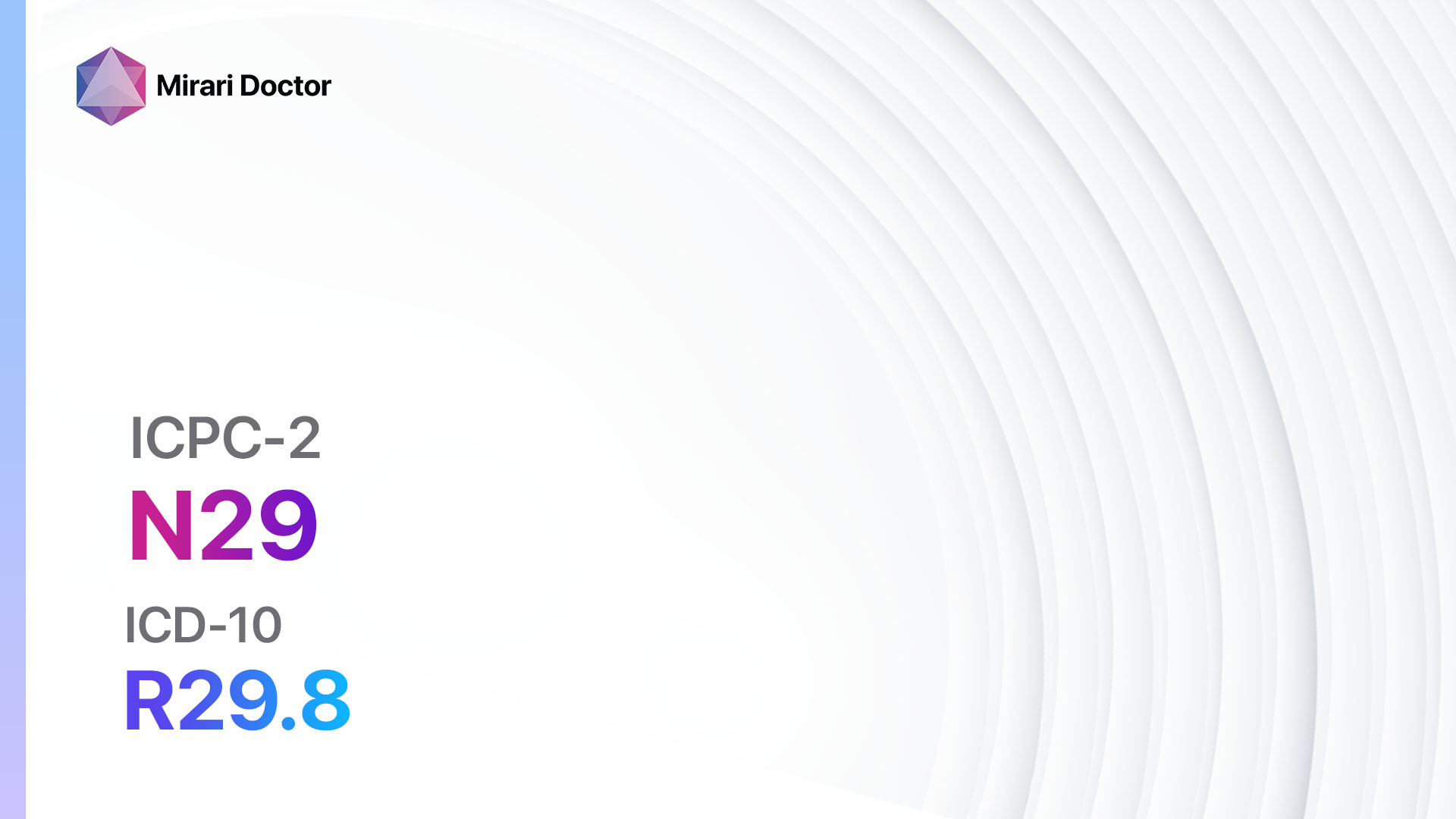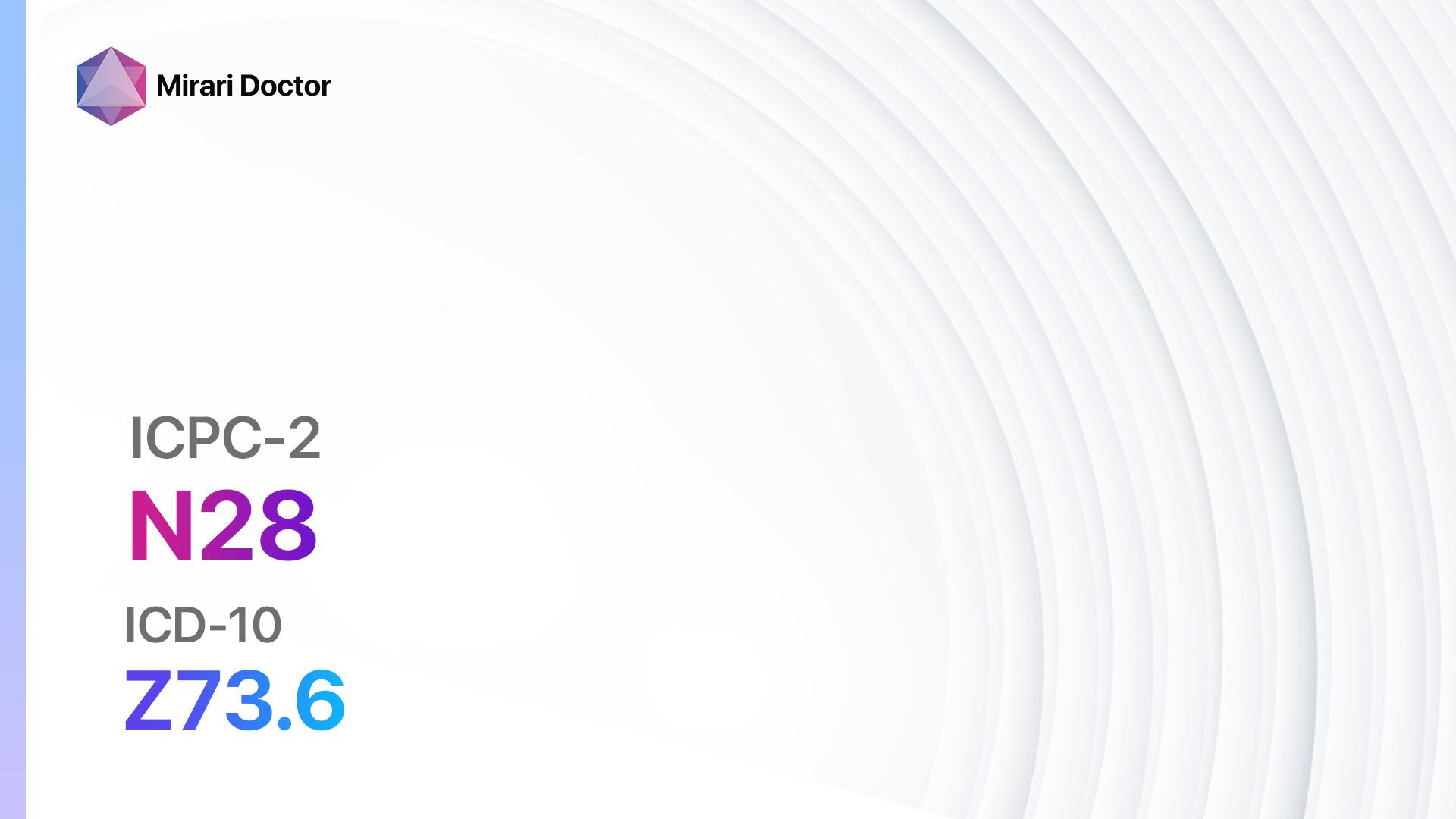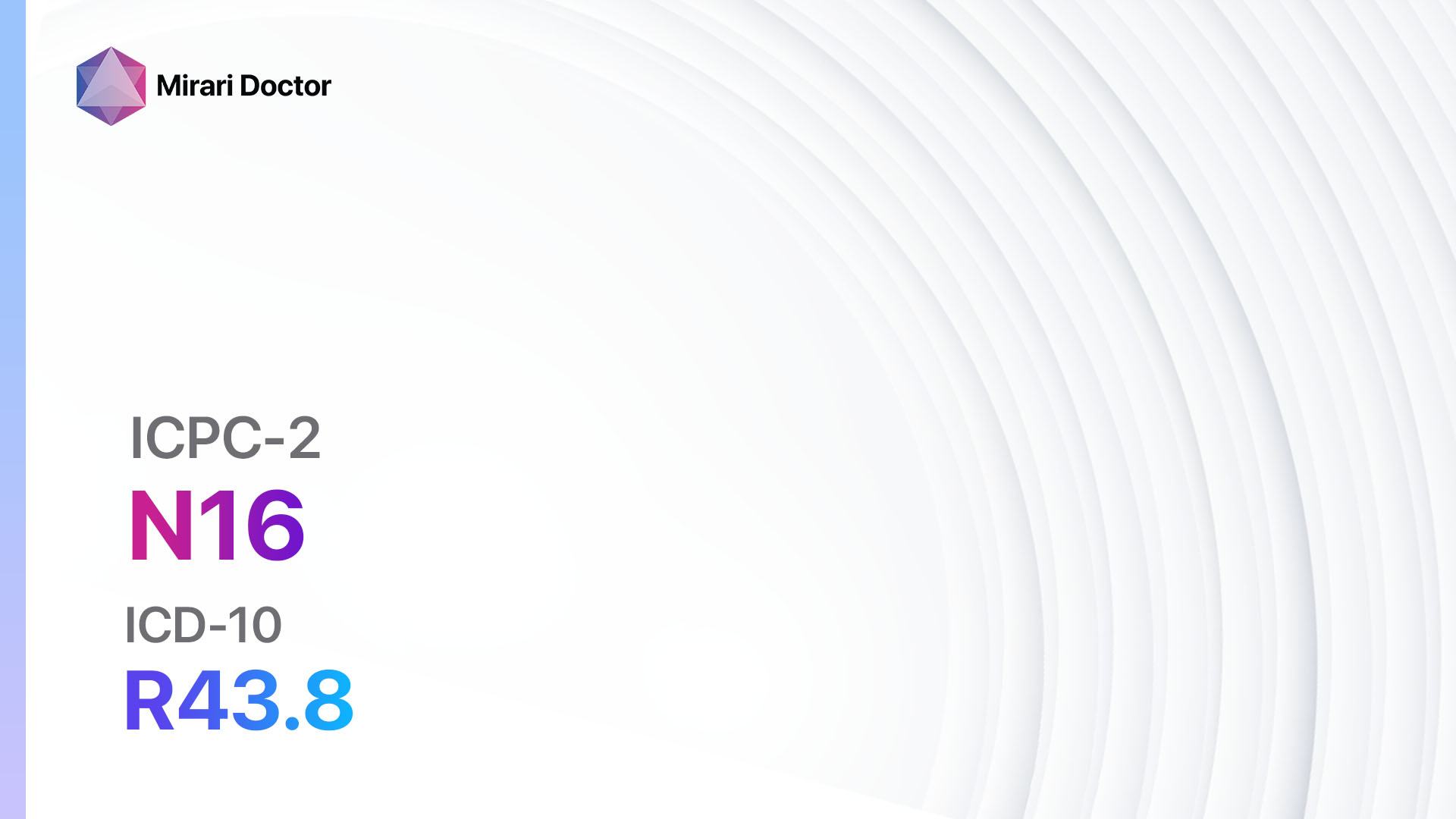
Introduction
Disturbance of smell/taste refers to a condition where an individual experiences a loss or alteration in their ability to smell or taste. This condition can significantly impact a person’s quality of life, as it can affect their enjoyment of food, ability to detect danger (such as spoiled food or gas leaks), and overall well-being.[1]The aim of this guide is to provide healthcare professionals with a comprehensive clinical procedural guide for diagnosing and managing disturbance of smell/taste.
Codes
- ICPC-2 Code: N16 Disturbance of smell/taste
- ICD-10 Code: R43.8 Other and unspecified disturbances of smell and taste
Symptoms
- Loss of smell (anosmia): Inability to detect odors or a significant decrease in the ability to smell.[2]
- Altered sense of smell (hyposmia): A reduced ability to detect or differentiate between different smells.[3]
- Loss of taste (ageusia): Inability to taste flavors or a significant decrease in the ability to taste.[4]
- Altered sense of taste (hypogeusia): A reduced ability to detect or differentiate between different tastes.[4]
Causes
- Nasal and sinus conditions: Chronic sinusitis, nasal polyps, and allergies can cause blockages or inflammation in the nasal passages, leading to a disturbance in smell and taste.[5]
- Upper respiratory infections: Viral or bacterial infections that affect the upper respiratory system can temporarily impair the sense of smell and taste.[6]
- Head trauma: Injuries to the head, including concussions or fractures, can damage the olfactory nerves and result in a loss or alteration of smell and taste.[7]
- Aging: As individuals age, their sense of smell and taste may naturally decline.[8]
- Medications: Certain medications, such as antibiotics, antihistamines, and chemotherapy drugs, can affect the sense of smell and taste.[9]
- Neurological conditions: Conditions like Parkinson’s disease, Alzheimer’s disease, and multiple sclerosis can impact the sense of smell and taste[10].
- Smoking: Smoking can damage the olfactory nerves and lead to a loss or alteration in smell and taste.
Diagnostic Steps
Medical History
- Gather information about the patient’s symptoms, including the onset, duration, and progression of the disturbance of smell/taste.
- Inquire about any recent upper respiratory infections, head trauma, or exposure to medications or chemicals that may affect smell and taste.
- Assess the patient’s medical history for any underlying conditions or medications that may contribute to the disturbance of smell/taste.
- Ask about any other associated symptoms, such as nasal congestion, sinus pain, or changes in appetite.
Physical Examination
- Perform a thorough examination of the nose and sinuses to check for any signs of inflammation, polyps, or other abnormalities.
- Evaluate the patient’s oral cavity for any signs of infection or inflammation that may affect taste.
- Assess the patient’s cranial nerves, particularly the olfactory nerve (cranial nerve I), for any signs of dysfunction.
Laboratory Tests
- Smell identification test: This test involves presenting the patient with a series of odors and asking them to identify each one. It can help determine the extent of the patient’s smell loss.
- Nasal endoscopy: A thin, flexible tube with a light and camera is inserted into the nose to visualize the nasal passages and identify any abnormalities.
- Blood tests: These tests can help identify any underlying medical conditions, such as infections or hormonal imbalances, that may be contributing to the disturbance of smell/taste.
- Allergy testing: If allergies are suspected, allergy testing may be performed to identify specific allergens that could be causing the symptoms.
Diagnostic Imaging
- CT scan or MRI: These imaging modalities can provide detailed images of the nasal cavity, sinuses, and brain to identify any structural abnormalities or lesions that may be affecting smell and taste.
Other Tests
- Taste test: Similar to the smell identification test, this test involves presenting the patient with different tastes and asking them to identify each one. It can help determine the extent of the patient’s taste loss.
- Biopsy: In cases where a tumor or abnormal growth is suspected, a biopsy may be performed to obtain a tissue sample for further analysis.
Follow-up and Patient Education
- Schedule follow-up appointments to monitor the patient’s progress and adjust treatment as necessary.
- Provide education to the patient about the potential causes of disturbance of smell/taste and the importance of adhering to the recommended treatment plan.
- Discuss strategies to cope with the loss or alteration of smell/taste, such as using visual cues to determine food freshness or experimenting with different flavors and textures.
Possible Interventions
Traditional Interventions
Medications:
Top 5 drugs for Disturbance of smell/taste:
- Steroid nasal sprays (e.g., Fluticasone, Budesonide):
- Cost: Generic versions can range from $15 to $60 per month.
- Contraindications: Hypersensitivity to steroids.
- Side effects: Nasal irritation, nosebleeds.
- Severe side effects: Adrenal suppression (with long-term use).
- Drug interactions: None significant.
- Warning: Regular monitoring for side effects is recommended.
- Antihistamines (e.g., Loratadine, Cetirizine):
- Cost: Generic versions can range from $5 to $20 per month.
- Contraindications: Hypersensitivity to antihistamines.
- Side effects: Drowsiness, dry mouth.
- Severe side effects: None significant.
- Drug interactions: Sedatives, alcohol.
- Warning: May cause drowsiness, caution while driving or operating machinery.
- Antibiotics (e.g., Amoxicillin, Azithromycin):
- Cost: Generic versions can range from $10 to $50 per course.
- Contraindications: Hypersensitivity to antibiotics.
- Side effects: Upset stomach, diarrhea.
- Severe side effects: Allergic reactions, antibiotic resistance.
- Drug interactions: None significant.
- Warning: Complete the full course of antibiotics as prescribed.
- Oral corticosteroids (e.g., Prednisone, Methylprednisolone):
- Cost: Generic versions can range from $10 to $50 per course.
- Contraindications: Active infections, systemic fungal infections.
- Side effects: Increased appetite, weight gain.
- Severe side effects: Adrenal suppression, osteoporosis.
- Drug interactions: None significant.
- Warning: Short-term use only, taper off gradually.
- Zinc supplements:
- Cost: Generic versions can range from $5 to $20 per month.
- Contraindications: None significant.
- Side effects: Upset stomach, nausea.
- Severe side effects: None significant.
- Drug interactions: None significant.
- Warning: Do not exceed recommended dosage.
Alternative Drugs:
- Alpha-lipoic acid: An antioxidant that may help improve nerve function. Cost: $10-$30 per month.
- Vitamin B12: Deficiency in vitamin B12 can affect the sense of smell and taste. Cost: $5-$20 per month.
- Ginkgo biloba: May improve blood flow and cognitive function. Cost: $10-$30 per month.
- Melatonin: Can help regulate sleep patterns and improve overall well-being. Cost: $5-$20 per month.
- Probiotics: May help improve gut health, which can indirectly affect smell and taste. Cost: $10-$30 per month.
Surgical Procedures:
- Polypectomy: Surgical removal of nasal polyps that may be obstructing the nasal passages. Cost: $5,000 to $10,000.
- Sinus surgery: In cases of chronic sinusitis or structural abnormalities, surgery may be performed to improve airflow and reduce inflammation. Cost: $10,000 to $20,000.
Alternative Interventions
- Acupuncture: May help improve blood flow and stimulate nerve function. Cost: $60-$120 per session.
- Aromatherapy: The use of essential oils to stimulate the sense of smell. Cost: $10-$50 for essential oils.
- Hypnosis: Can help reduce stress and improve overall well-being, potentially impacting the sense of smell and taste. Cost: $100-$200 per session.
- Herbal supplements: Certain herbs, such as ginger or mint, may help stimulate the senses. Cost: Varies depending on the specific supplement.
- Mindfulness-based stress reduction: Stress reduction techniques may indirectly improve the sense of smell and taste. Cost: $100-$200 for a mindfulness course.
Lifestyle Interventions
- Maintain good oral hygiene: Regular brushing, flossing, and dental check-ups can help prevent oral infections that may affect taste.
- Avoid smoking and exposure to secondhand smoke: Smoking can damage the olfactory nerves and impair the sense of smell and taste.
- Avoid exposure to strong odors or chemicals: Certain chemicals or strong odors can temporarily affect the sense of smell and taste.
- Stay hydrated: Drinking an adequate amount of water can help maintain proper hydration and support overall health.
- Eat a balanced diet: Consuming a variety of nutritious foods can help support overall health and potentially improve the sense of taste.
It is important to note that the cost ranges provided are approximate and may vary depending on the location and availability of the interventions.
Mirari Cold Plasma Alternative Intervention
Understanding Mirari Cold Plasma
- Safe and Non-Invasive Treatment:Mirari Cold Plasma is a safe and non-invasive treatment option for various skin conditions. It does not require incisions, minimizing the risk of scarring, bleeding, or tissue damage.
- Efficient Extraction of Foreign Bodies:Mirari Cold Plasma facilitates the removal of foreign bodies from the skin by degrading and dissociating organic matter, allowing easier access and extraction.
- Pain Reduction and Comfort:Mirari Cold Plasma has a local analgesic effect, providing pain relief during the treatment, making it more comfortable for the patient.
- Reduced Risk of Infection:Mirari Cold Plasma has antimicrobial properties, effectively killing bacteria and reducing the risk of infection.
- Accelerated Healing and Minimal Scarring: Mirari Cold Plasma stimulates wound healing and tissue regeneration, reducing healing time and minimizing the formation of scars.
Mirari Cold Plasma Prescription
Video instructions for using Mirari Cold Plasma Device – N16 Disturbance of smell/taste (ICD-10:R43.8)
| Mild | Moderate | Severe |
| Mode setting: 2 (Wound Healing) Location: 0 (Localized) Morning: 15 minutes, Evening: 15 minutes | Mode setting: 2 (Wound Healing) Location: 0 (Localized) Morning: 30 minutes, Lunch: 30 minutes, Evening: 30 minutes | Mode setting: 2 (Wound Healing) Location: 0 (Localized) Morning: 30 minutes, Lunch: 30 minutes, Evening: 30 minutes |
| Mode setting: 7 (Immunotherapy) Location: 1 (Sacrum) Morning: 15 minutes, Evening: 15 minutes | Mode setting: 7 (Immunotherapy) Location: 1 (Sacrum) Morning: 30 minutes, Lunch: 30 minutes, Evening: 30 minutes | Mode setting: 7 (Immunotherapy) Location: 1 (Sacrum) Morning: 30 minutes, Lunch: 30 minutes, Evening: 30 minutes |
| Modesetting:7 (Immunotherapy) Location:7 (Neuro system & ENT) Morning:15 minutes, Evening:15minutes | Mode setting:7 (Immunotherapy) Location:7 (Neuro system & ENT) Morning:30 minutes, Lunch:30 minutes, Evening:30 minutes | Mode setting:7 (Immunotherapy) Location:7 (Neuro system & ENT) Morning:30 minutes, Lunch:30 minutes, Evening:30 minutes |
| Modesetting:7 (Immunotherapy) Location:7 (Neuro system & ENT) Morning:15 minutes, Evening:15minutes | Mode setting:7 (Immunotherapy) Location:7 (Neuro system & ENT) Morning:30 minutes, Lunch:30 minutes, Evening:30 minutes | Mode setting:7 (Immunotherapy) Location:7 (Neuro system & ENT) Morning:30 minutes, Lunch:30 minutes, Evening:30 minutes |
| Total Morning:60minutesapprox.$10USD, Evening:60minutesapprox.$10USD | Total Morning:120minutesapprox.$20USD, Lunch:120minutesapprox. $20 USD, Evening:120minutesapprox. $20 USD, | Total Morning:120minutesapprox.$20USD, Lunch:120minutesapprox. $20 USD, Evening:120minutesapprox. $20 USD, |
| Usualtreatmentfor7-60daysapprox.$140USD–$1200USD | Usualtreatmentfor6-8weeksapprox.$2,520USD–$3,360USD | Usualtreatmentfor3-6monthsapprox.$5,400USD–$10,800USD |
 |
|
Use the Mirari Cold Plasma device to treat Disturbance of smell/taste effectively.
WARNING: MIRARI COLD PLASMA IS DESIGNED FOR THE HUMAN BODY WITHOUT ANY ARTIFICIAL OR THIRD PARTY PRODUCTS. USE OF OTHER PRODUCTS IN COMBINATION WITH MIRARI COLD PLASMA MAY CAUSE UNPREDICTABLE EFFECTS, HARM OR INJURY. PLEASE CONSULT A MEDICAL PROFESSIONAL BEFORE COMBINING ANY OTHER PRODUCTS WITH USE OF MIRARI.
Step 1: Cleanse the Skin
- Start by cleaning the affected area of the skin with a gentle cleanser or mild soap and water. Gently pat the area dry with a clean towel.
Step 2: Prepare the Mirari Cold Plasma device
- Ensure that the Mirari Cold Plasma device is fully charged or has fresh batteries as per the manufacturer’s instructions. Make sure the device is clean and in good working condition.
- Switch on the Mirari device using the power button or by following the specific instructions provided with the device.
- Some Mirari devices may have adjustable settings for intensity or treatment duration. Follow the manufacturer’s instructions to select the appropriate settings based on your needs and the recommended guidelines.
Step 3: Apply the Device
- Place the Mirari device in direct contact with the affected area of the skin. Gently glide or hold the device over the skin surface, ensuring even coverage of the area experiencing.
- Slowly move the Mirari device in a circular motion or follow a specific pattern as indicated in the user manual. This helps ensure thorough treatment coverage.
Step 4: Monitor and Assess:
- Keep track of your progress and evaluate the effectiveness of the Mirari device in managing your Disturbance of smell/taste. If you have any concerns or notice any adverse reactions, consult with your health care professional.
Note
This guide is for informational purposes only and should not replace the advice of a medical professional. Always consult with your healthcare provider or a qualified medical professional for personal advice, diagnosis, or treatment. Do not solely rely on the information presented here for decisions about your health. Use of this information is at your own risk. The authors of this guide, nor any associated entities or platforms, are not responsible for any potential adverse effects or outcomes based on the content.
Mirari Cold Plasma System Disclaimer
- Purpose: The Mirari Cold Plasma System is a Class 2 medical device designed for use by trained healthcare professionals. It is registered for use in Thailand and Vietnam. It is not intended for use outside of these locations.
- Informational Use: The content and information provided with the device are for educational and informational purposes only. They are not a substitute for professional medical advice or care.
- Variable Outcomes: While the device is approved for specific uses, individual outcomes can differ. We do not assert or guarantee specific medical outcomes.
- Consultation: Prior to utilizing the device or making decisions based on its content, it is essential to consult with a Certified Mirari Tele-Therapist and your medical healthcare provider regarding specific protocols.
- Liability: By using this device, users are acknowledging and accepting all potential risks. Neither the manufacturer nor the distributor will be held accountable for any adverse reactions, injuries, or damages stemming from its use.
- Geographical Availability: This device has received approval for designated purposes by the Thai and Vietnam FDA. As of now, outside of Thailand and Vietnam, the Mirari Cold Plasma System is not available for purchase or use.
References
- Hummel T, Whitcroft KL, Andrews P, et al. Position paper on olfactory dysfunction. Rhinology. 2017;54(26):1-30.
- Boesveldt S, Postma EM, Boak D, et al. Anosmia-A Clinical Review. Chem Senses. 2017;42(7):513-523.
- Landis BN, Hummel T, Hugentobler M, et al. Ratings of overall olfactory function. Chem Senses. 2003;28(8):691-694.
- Bromley SM. Smell and taste disorders: a primary care approach. Am Fam Physician. 2000;61(2):427-436.
- Seiden AM, Duncan HJ. The diagnosis of a conductive olfactory loss. Laryngoscope. 2001;111(1):9-14.
- Suzuki M, Saito K, Min WP, et al. Identification of viruses in patients with postviral olfactory dysfunction. Laryngoscope. 2007;117(2):272-277.
- Costanzo RM, Miwa T. Posttraumatic olfactory loss. Adv Otorhinolaryngol. 2006;63:99-107.
- Doty RL, Kamath V. The influences of age on olfaction: a review. Front Psychol. 2014;5:20.
- Schiffman SS. Influence of medications on taste and smell. World J Otorhinolaryngol Head Neck Surg. 2018;4(1):84-91.
- Doty RL. Olfactory dysfunction in neurodegenerative diseases: is there a common pathological substrate? Lancet Neurol. 2017;16(6):478-488.
Related articles
Made in USA


